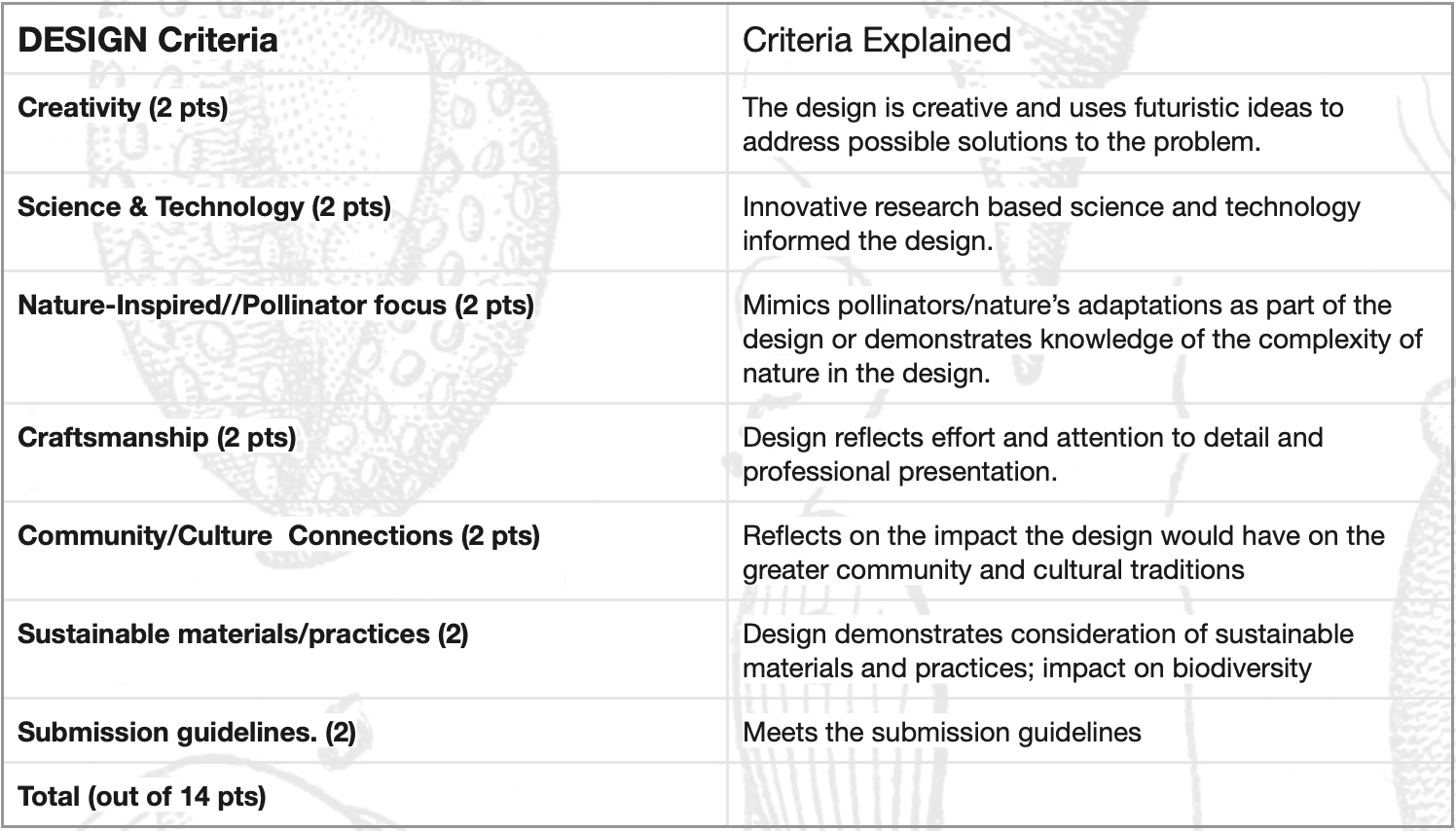Artist: The biomimicry curriculum methodology is derived from and in consultation with Ana MacArthur. Visit the artist website to learn more www.anamacarthur.com
Topic: Biodiversity loss and pollinator decline.
Overview: The BIO-MACHINE: Pollinator-inspired design challenge asks you to submit a drawing/design that is informed by the research and experiments explored through the BioSTEAM Project: Pollinator Concentrator. Design an imaginative BIO-MACHINE inspired by one or more of the six pollinators, to explore the topic of biodiversity loss and pollinator decline and how it is important to our community, our food security and the health of our planet.
What is a BIO-MACHINE?
For the BioSTEAM Design Challenge we are using the term BioMachine to describe an invention that incorporates, synthesizes or is inspired by biological materials or systems in the design. The final design can be an object, a new system or an interface between species. It performs a task or combination of tasks to solve a problem that helps us live in balance with nature or directly protects nature and biodiversity.
Let your imaginations fly to create an original and creative BIOMACHINE design; an expression of what has inspired you and what you learned. We encourage what may seem like wildly impossible futuristic solutions, as well as innovative and practical designs. The final design should be an artistic expression yet clearly demonstrating that careful thought has been given to its sustainable materials, ecological impact, benefit to community and planet, and sensitivity to the biocultural diversity of the community it serves.
Why pollinator-inspired design?
Pollinator species diversity provides an incredible resource to learn from. The interspecies art installation, Pollinator Concentrator, highlights six species of pollinators local to Rio Fernando Park or in reference to global species in peril. Pollinator species as a group represent interesting biological strategies that scientists, artists and engineers are mimicking to design new technologies. The BioSTEAM Design Challenge is an opportunity to learn from nature and to cultivate the agency to innovate the art, culture and technologies for a resilient future.
- What pollinator inspired bio-machine can you invent that uses existing and future technologies in a way that is in balance with nature and can protect biodiversity?
- What are the ecological impacts of the materials you have chosen? How does your machine get power? How does it process waste?
- How can pollinator adaptations and processes inspire new tools and creative application to real world challenges?
What are some examples of a BIOMACHINE?
Inventions can take many forms: A bio-machine interface for the human body inspired by bats with invisible sensors that light up to detect and block airborne viruses.; A bio-machine sensor inspired by butterfly cocoons, that emerges from the soil after consuming all the unnatural chemicals.; A swarm of naoscale drones inspired by moths that emit signals that ward off pests contributing to crop devastation.
Teachers: Explore the Pollinator Concentrator project page. Use the tools and resources to create a lesson plan or classroom project around the topic of biodiversity loss and pollinator decline. The Teacher Tools page provides lesson guides, resources to get you started. The design challenge is the last stage of the project where students create a culminating drawing/design inspired by the pollinators they have been studying to inform their design. The final designs are shared at through a school event but can also be submitted to us. Winning entries will be included on our website gallery.
Students: If you are ready to get started here are the basic steps:
- 1. Jump right to the BioSTEAM Design Tool which takes you through the stages to explore, research, experiment, connect and design your BIOMACHINE design.
- 2. Choose one or more pollinators from the list of 6 pollinators to inform your design.
- 3. Decide on an idea for your BIOMACHINE design.
- 4. Research the science/technology that will support your design.
- 5. Choose the materials and processes that you imagine for your design.
- 6. Write a design statement that describes your BIOMACHINE: How it works, how it addresses the topic of Biodiversity loss/pollinator decline, what is the research-based science/technology behind the work, how it helps people/community/planet, how you designed it sustainably for and with nature.
- 7. Create your final BIOMACHINE design in whatever medium you like. The final should be a two dimensional image with a clear and defined representation of your BIOMACHINE against a white background.
- 8. Submit your design statement as a one page PDF and the final design as a JPG:


